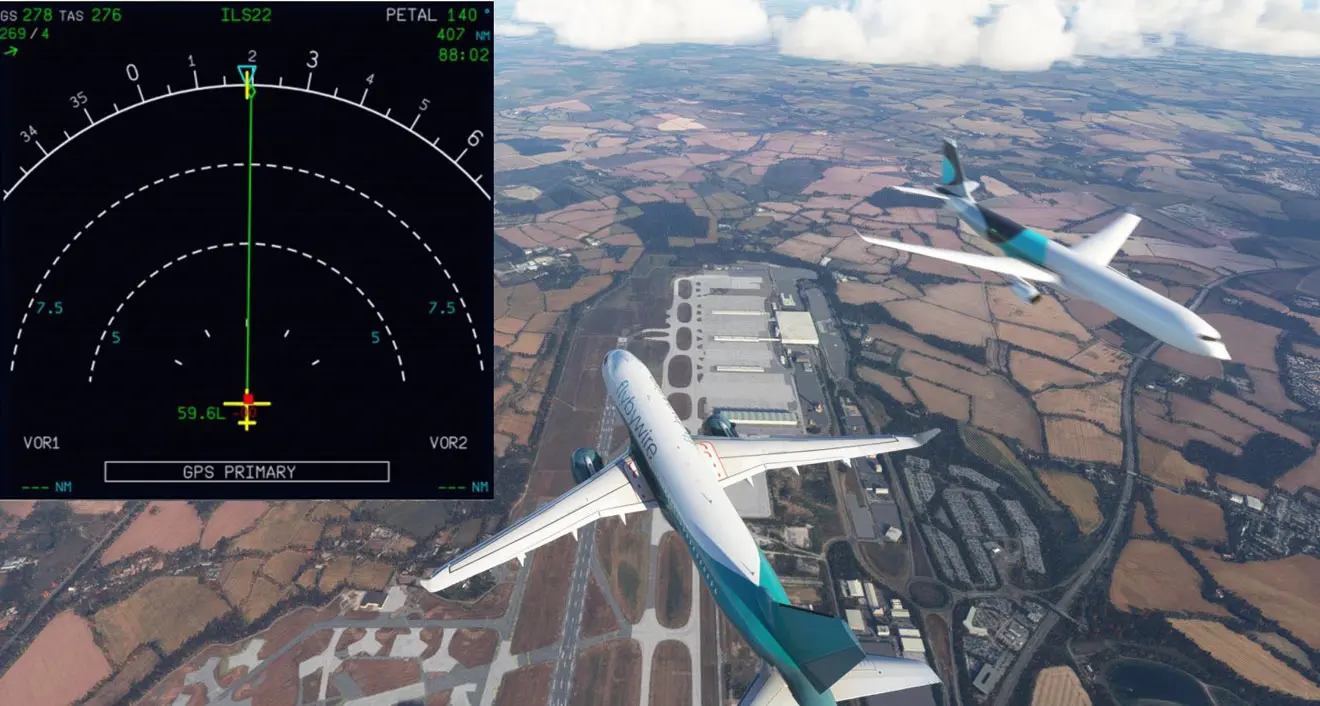TCAS
(Editors' info: all the images on the ND screen were taken with the FBW A32NX, and the highlights are framed in red)
What does it mean ?
Traffic alert and Collision Avoidance System
What's the point ?
Detect and display surrounding aircraft equipped with a transponder,
- Calculate and display possible collision risks,
- Trigger vertical speed orders, in order to avoid collisions.
Principles
TCAS capacity is limited to 30NM on each side of the aircraft and 30 to 80 NM longitudinally in an altitude range of +/- 9900 ft.
The TCAS retrieves the parameters transmitted by the transponders of other aircraft and uses them to assess the risk of collision.
It determines:
- The heading of intruders (in relation to the heading of the aircraft),
- The distance between the aircraft and the intruders (and the rate of approach / distance),
- The relative altitudes of intruders (if they are equipped with an alticoder).
It then calculates the intruder's trajectory, the closest point of intersection (CPA: Closest Point of Approach), and the estimated time before reaching the CPA (TAU or ... Time To Intercept !?).
The TAU is the ratio between the distance between the two aircraft and the sum of their speeds.
If the TCAS detects that the intruder's path may lead to a collision, it triggers:
- Visual and audio alarms,
- A vertical speed order, to ensure vertical separation of the trajectories.
Equipments
A TCAS computer,
- 2 antennas,
- 2 mode S transponders (one active, one on standby) which provide the interface between the ATC / TCAS panel and the TCAS computer and communication between the aircraft and intruders equipped with the TCAS system.
- An ATC / TCAS panel.
Intruder detection categories
The TACS divides the space around the aircraft into 4 categories:
- Resolution Advisory (RA)
- Traffic Advisory (TA)
- Intruders nearby
- Other intruders
Other intruders:
No risk of collision within a radius of less than 30 NM: hollowed out white diamond
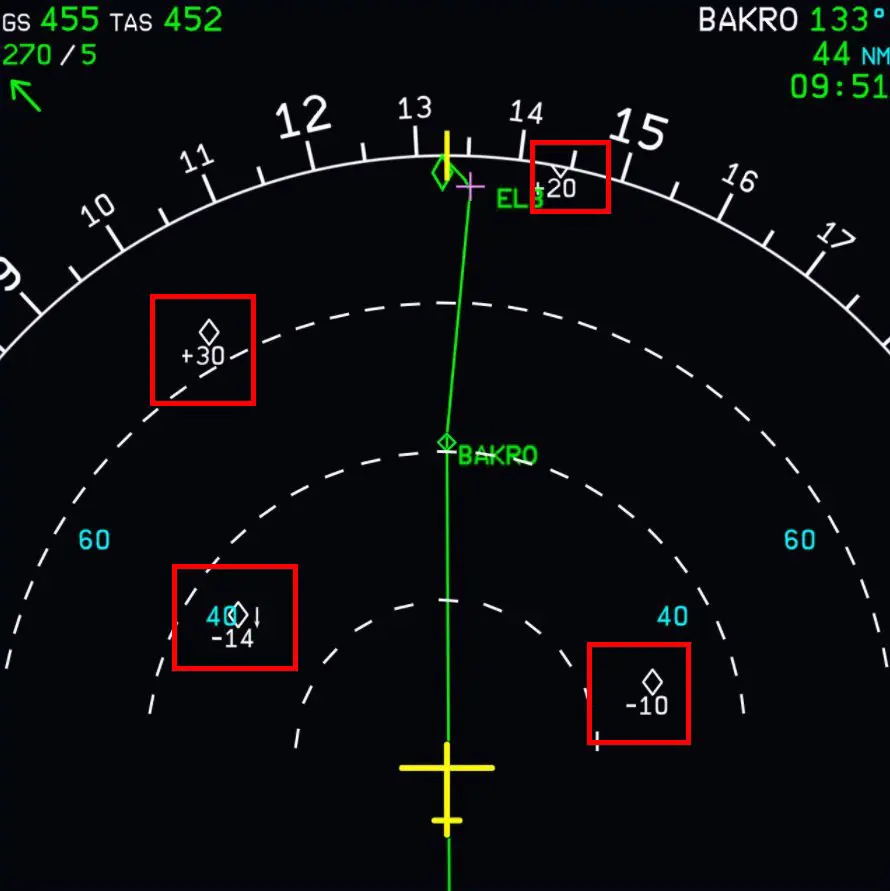
Intruders nearby:
No risk of collision within a radius of less than 6NM and +/- 1200 ft: solid white diamond
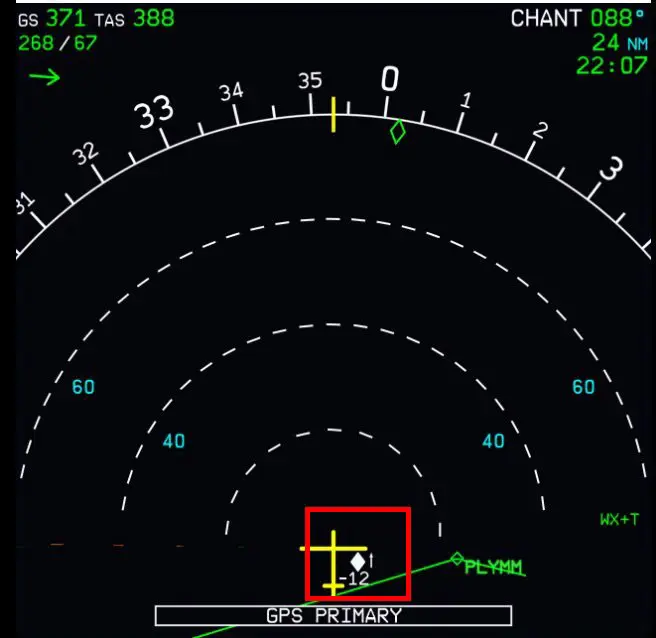
TA: Possible threat of collision, TAU is around 40s *, audio alarm: amber circle
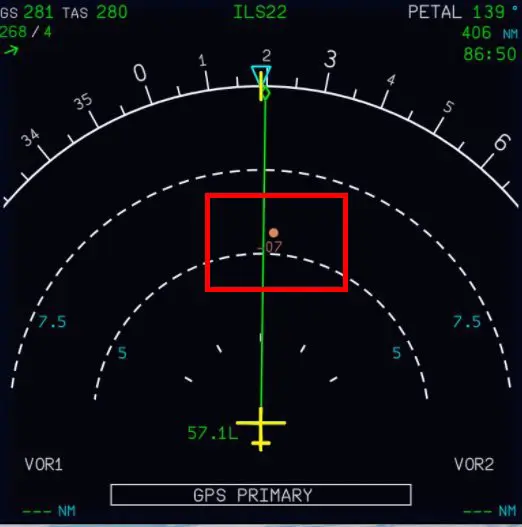
RA: Real risk of collision, the TAU is around 25s *, audio alarm and vertical speed orders to adopt (maintain V / S or modify it): red square
* idea, because the trigger threshold (= TAU) is in fact variable according to the altitude of the conflicting aircraft.
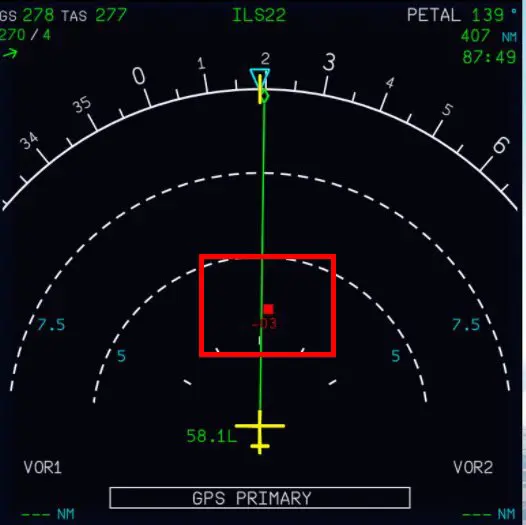
TCAS modes
Selectable on the ATC / TACS panel, there are 3 of them:
- TA / RA mode
- TA ONLY mode
- Standby mode (STBY)
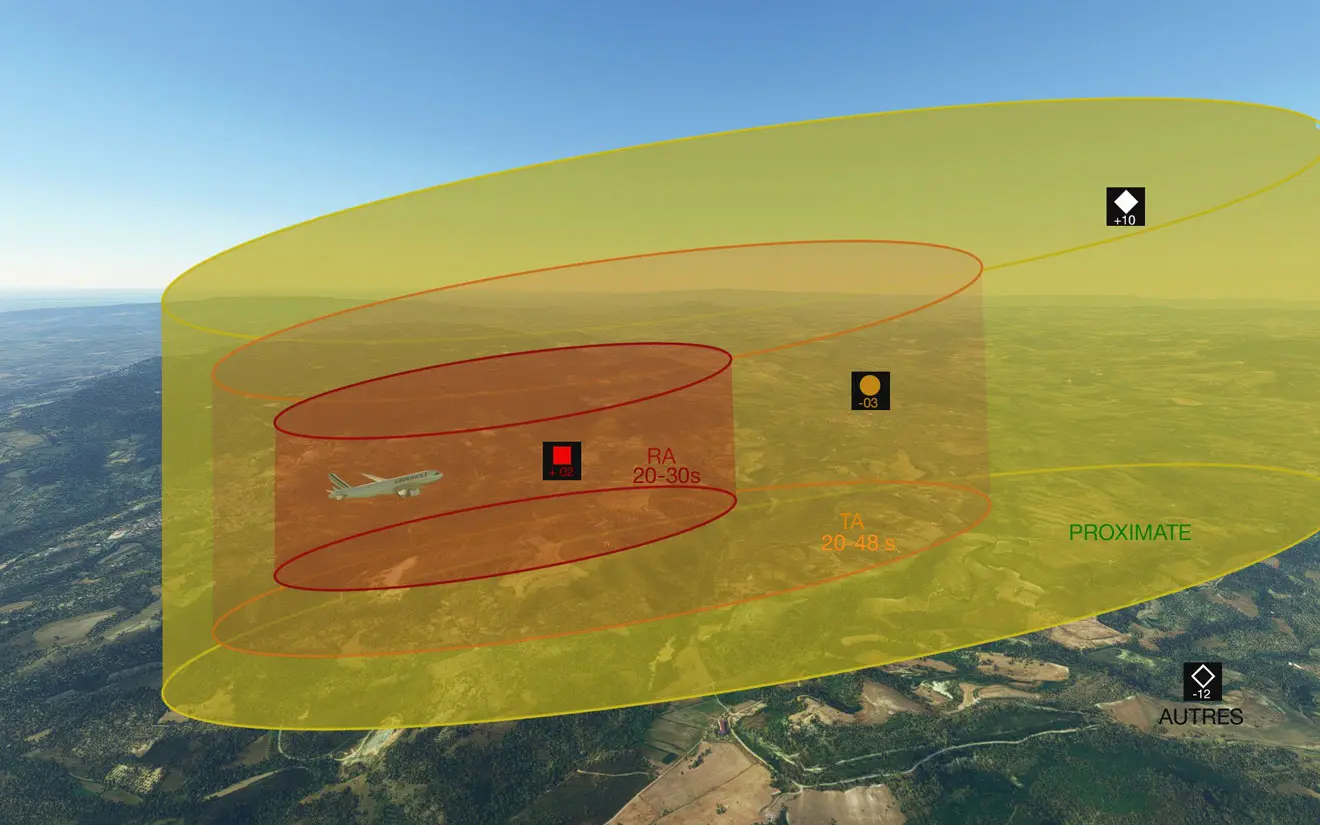
TA / RA mode is the normal mode of use and makes it possible to display intruders on the ND and the vertical speed to adopt on the PFD to avoid a collision.
TA ONLY mode: Manually selected in the event of degraded aircraft performance (eg: engine failure, the aircraft may not then be able to ensure climb avoidance performance, it will be up to the intruder to increase evasive maneuvers) or during specific procedures that could lead to inappropriate RAs (such as operations on parallel or converging runways).
It is automatically selected when a WindShear alarm or Stall alarm or GPWS (ground proximity alarm) is triggered or when the aircraft is below 1000 ft.
(For information, the priorities for triggering alarms on 320 are as follows: SWET namely Stall, Windshear, EGPWS, TCAS).
When flying in TA ONLY mode:
- All RAs are converted to TA
- The TA trigger threshold is a TAU of 20s whatever the altitude of the aircraft.
- No vertical speed displayed on the PFD
- "TA ONLY" displayed on the PFDs
STANBY mode: no monitoring therefore no alarm and no display on ND and PFD (and no protection!)
System inhibition
Certain alarms will be inhibited depending on the flight conditions of the aircraft and / or intruders.
Ex: no audio "Descent" alarm below 1100 ft, no "Increase descent" alarm below 1550 ft, all RAs below 1100 ft uphill or 900 ft downhill are converted to TA...
Intruder without altitude report
The relative altitudes do not appear on the ND (no digital indication under the target), the TCAS never triggers an RA and inhibits the TAs if the aircraft is above 15,500 ft.
The ATC / TCAS panel
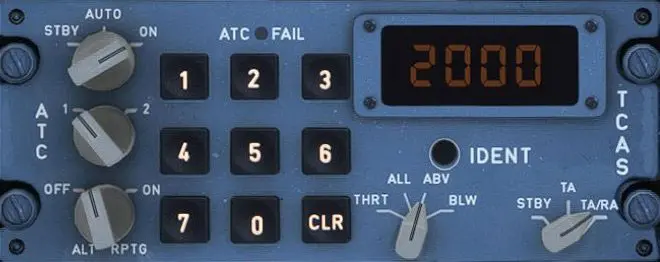
The TCAS part consists of the two rotators at the bottom right of the panel:
The mode selector (on the right) with 3 positions: TA / RA, TA, STBY
The traffic selector (THRT, ALL, ABV, BLW):
THRT: Threat, the symbology of intruders will only be displayed in the event of TA or RA if they are within +/- 2700 ft.
ALL (all): display of intruders even without TA or RA if they are at +/- 2700 ft.
ABV (above): display of intruders if they are at + 9900 ft down to - 2700 ft. This is the most suitable mode for climbing).
BLW (below): Display of intruders if they are at + 2700 ft up to -9900 ft. This is the most suitable mode for descent or cruising [for visualization of traffic in the event of an emergency descent]).
Indications on the ND
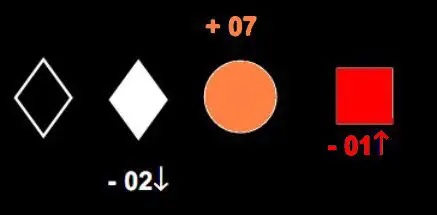
Intruder traffic is displayed in ARC and PINK mode if the scale is 10, 20 or 40 NM. Only the 8 most "threatening" intruders are displayed.
An intruder in the Proximate area will be displayed as a solid white diamond.
A TA intruder will be displayed as an amber circle and the audio message TRAFFIC-TRAFFIC will be played.
An RA intruder will be displayed as a red square, and an audio message will be played, associated with an indication of a vertical order in the Vertical Speed section (V/S).
All other intruders will be displayed as a hollowed out white diamond.
The relative altitude of intruders (relative to the aircraft) is displayed in hundreds of feet above or below the intruder symbol and in its color (ex: +11 = 1,100 feet above. -03 = 300 feet below).
An up or down arrow, in the color of the intruder and in the direction of its position variation in the vertical plane will be displayed to the right of its symbol if its V/S > 500 ft / min.
PFD indications
In the event of an RA trigger, the vertical speed scale becomes rectangular and the PFD displays vertical orders on the V/S scale. The background of the V/S scale, normally gray, will be replaced, possibly partially, by green and red zones.
Red zone: indicates the V/S zone where the risk of conflict is high.
Green zone: larger than the red zone, it indicates the recommended V/S range (you can also "fly in gray zone" if it is displayed).
In RA, the normally green V/S needle turns white.
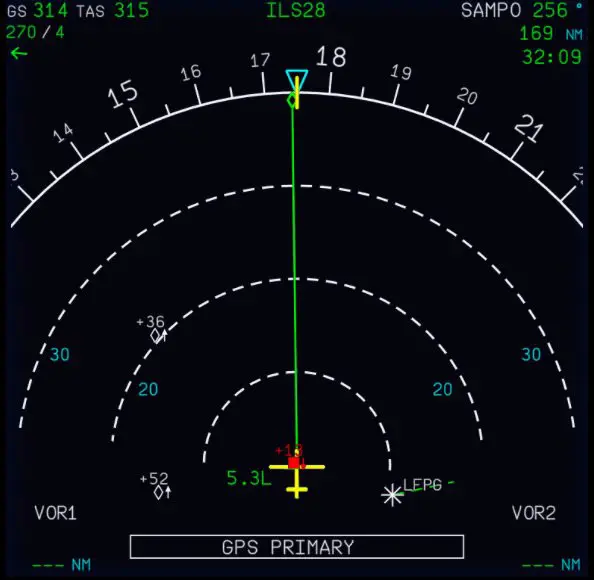
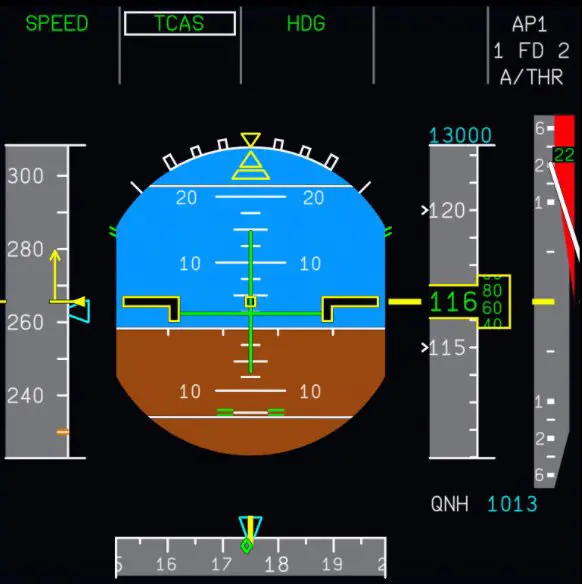
Possible audio messages
TRAFFIC TRAFFIC: detection of a TA, which can become an RA, this is an alert phase.
CLIMB CLIMB: RA, climb in the green zone indicated in the PFD
CLIMB, CROSSING CLIMB (2 times): Same, but indicates that we are going to cross the altitude of the intruder
INCREASE CLIM (2 times): triggers after the CLIMB message if the vertical speed is insufficient to obtain sufficient vertical separation.
DESCEND DESCEND: RA, descend into the green zone indicated in the PFD
DESCEND, CROSSING DESCEND (2 times): Same, but indicates that we are going to cross the altitude of the intruder
INCREASE DESCEND (2 times): triggers after the DESCEND message if the vertical speed is insufficient to obtain sufficient vertical separation.
LEVEL OFF, LEVEL OFF: indicates that a V/S = 0 must be taken
CLIMB CLIMB NOW (2 times): triggers after the DESCEND message if the intruder's trajectory has changed.
DESCEND DESCEND NOW (2 times): triggered after the CLIMB message if the intruder's trajectory has changed.
MONITOR VERTICAL SPEED: Make sure the V / O stays outside the red zone.
MAINTAIN VERTICAL SPEED, MAINTAIN: Maintain the V/S indicated on the PFD
MAINTAIN VERTICAL SPEED, CROSSING MAINTAIN: Maintain the V/S indicated on the PFD, but indicates that we will cross the altitude of the intruder
CLEAR OF CONFLICT: There is sufficient separation and distance, return to assigned clearance.
Control technique in the event of a TA (TRAFFIC TRAFFIC) and / or RA alarm being triggered
The best way to avoid an AT or RA is to not induce them yourself! We are the intruders of our intruders!
On an ascent or descent, the TCAS "does not know" that you intend to stop 1000 feet from the traffic in front of you. The pilot must therefore limit the vertical speed to 1500 ft / min (vertical speed button on the FCU) when it approaches less than 2000 ft from the assigned altitude.
TA triggering (TRAFFIC TRAFFIC audio message): the crew should expect a TA message within seconds. The PF will then put his hands on the flight controls and announce "TCAS I HAVE CONTROLS" and prepare to react to the next order that will be given.
If the next announcement is CLEAR OF CONFLICT, the alert is raised and the flight is resumed normally.
In the case of another message, that is to say when an RA is triggered (CLIMB CLIMB or DESCEND DESCEND or other ...), the PF will announce "AP OFF" and will cut off the autopilot by the red button located on its handle then "FD OFF", the PM will cut the two FDs (we make sure that the airplane will be in SPEED mode with speed maintenance and we will thus avoid a possible confusion between the indications of the FD, the audio commands and the colored sectors on the V/S scale).
Within 5s of triggering the audio command (and after disconnecting the AP and FDs), the PF should loosely but firmly position the V/S needle outside of the red part of the scale and into the green zone. It can go up to Valpha max and Vmax while avoiding excessive maneuvers.
The PM will monitor the maneuver and send a message to ATC (such as "Control from XXX, TCAS RA").
Under no circumstances should a maneuver reverse to that recommended be initiated because the TCAS maneuvers of the two aircraft are coordinated: if your TCAS issues you a descent order, the intruder will be given a climb order.
The TCAS order takes priority over an air traffic control instruction! Cf. the Überlingen air collision.
The TCAS only gives an order in the vertical plane but the trajectory of the airplane in the horizontal plane must nevertheless be followed without the FDs.
Once the avoidance maneuver is completed, CLEAR OF CONFLICT audio message, the crew must return to their previously assigned flight altitude and re-engage the automated systems.
The PM will make a radio announcement like "Control from XXX, clear of conflict, resuming flight level XXX").
An RA trigger will systematically be the subject of an Airprox and a crew report.
On certain airplanes there is now the AP / FD TCAS system where the avoidance maneuver is automatically performed by the autopilot (if it is engaged). Additional information will be provided if this equipment is one day actually implemented.
Risks of misinterpretation
The reference (our aircraft) for displaying intruders is mobile (like intruders), unlike the image from the fixed radar station on the ground available to the controllers. They also have the speed vector of each aircraft. and therefore their direction of movement).
Consequently, the TCAS display presents targets in relative movement, inducing a risk of false interpretation of the trajectories.
The most significant situation is that of two traffics whose trajectories intersect at 90 °.
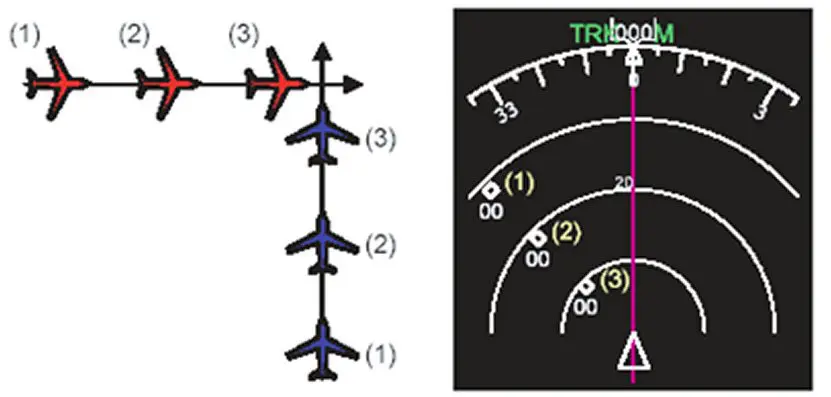
Conclusion: screenshot taken with the A32NX experimental version "TCAS" under FS2020: What should never happen!
